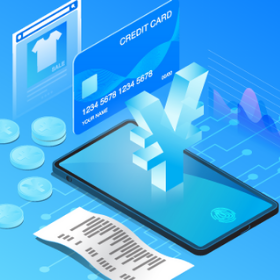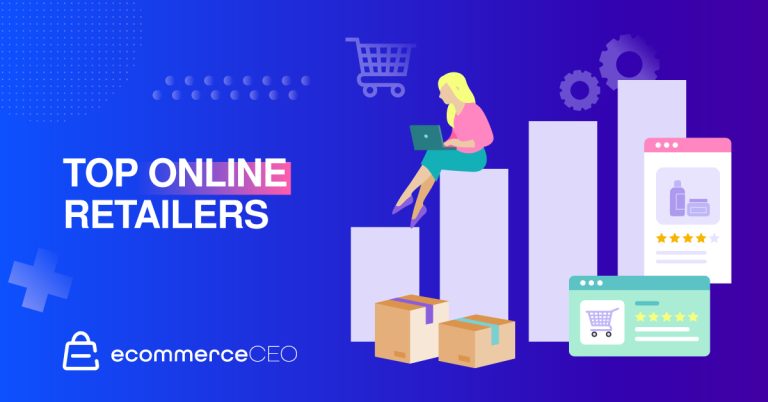
- Posted on
- • November 16, 2020
- Marketing Tips

Looking for ways to grow your sales? Instead of focusing solely on finding new customers, take advantage of opportunities to engage your returning customers—the people who are already familiar with your brand and more likely to keep coming back to your business. With research demonstrating how retaining customers correlates to an increase in profit, customer retention should be a key part of your growth strategy.
One way to enhance your customer retention is by offering a loyalty program. In their research, Forrester found that 89 percent of online adults belonged to at least one loyalty program. Loyalty programs are effective tools for building up your customer base, increasing customer spend, and creating more opportunities for customer engagement. Recent research shows that shoppers are more likely to recommend brands with good loyalty programs and increase their spending to maximize the benefits of the program.
In this article, we discuss how to determine who your customers are, how to design a program based on their needs, and how to successfully promote your program and encourage sign-ups.
Find Out Who Your Customers Are
The first step to creating any customer-centric plan is to determine who your customers are. The profile of your ideal customer could include their age, gender, household size, shopping habits, purchase history, their motivation for purchasing your products, and more. The next step is to evaluate their level of engagement with your business:
- Do they visit your store once a week, or once every six months?
- What are they buying?
- How much are they spending?
You can pull information from your POS system (if you have a physical store) or your ecommerce platform. You can also gain more insight by asking customers to complete a short survey about the products they buy and what they’re interested in. The more data you have on your customers, the better. This data will help you decide what kind of loyalty program will appeal to your customers, provide them with the most value, and keep them returning to your business.
Decide on a Rewards Structure
There are many ways that you can structure your loyalty program. The best structure is directed towards your specific customer profile, offers realistic and attainable rewards, and is easy to understand. Once you determine your customer needs, choose a program that aligns with their shopping habits. Here are a few popular rewards structures:
- Discount prices: Many stores offer rewards members a lower price on specific goods. The items you provide a discount on should be those that the customer is likely to buy. For example, if most of your customers are vegetarians, offering a member discount on beef won’t keep them coming back.
- Points system: A points-based program can be a simple way to offer an incentive for customers to return. Make sure the points system is transparent (for example,1 point per dollar spent) and realistically attainable for shoppers. If customers have to earn 1,000 points before they receive any benefits, they won’t participate.
- Tiered rewards: Tiered rewards add an additional layer to a traditional points or rewards system by offering different rewards based on milestones that members reach. These milestones can be a great way to increase engagement and provide a sense of exclusivity for shoppers who spend higher. As with points-based systems, make sure that the rewards in each tier are valuable, attainable, and easy to understand.
- Subscription: Subscriptions offer convenience and personalization to customers and are an effective and popular way to skyrocket your customer loyalty. Before implementing a subscription program, consider your website goals, the customer needs you’re addressing, and whether your processes have the ability to accommodate this service.

Regardless of the structure you choose, the most important aspect is that your program is simple and accessible to customers. According to KPMG, 60 percent of millennial shoppers agree that loyalty programs are either too hard to join or challenging to earn rewards. Don’t be part of that 60 percent—be sure to make your loyalty program attainable and engaging to maximize its value for you and your customers.
Promote Your Program
A loyalty program cannot fulfill its purpose of getting customers to return to your store if no one signs up for it. To have a successful loyalty program, it is important to promote your new program and offer incentives for customers to join. Consider the following ideas:
- Promote your new loyalty program in your email campaigns, social media, paid ads, and other marketing channels.
- Place banners around your website and on your product pages that feature and explain the new program, the structure, the terms, and how to sign up.
- Provide an incentive for signing-up by running a promotion to kick-start the program and bring customers into your store. Offer a free gift to the first 100 customers who sign up, double rewards points for the first month, or run a raffle in which one new member will be chosen to win a high-value gift.
When putting together your business’s first loyalty program, don’t go for the first cookie-cutter solution that you find. Give your customers exactly what they want from a rewards program, and they’ll give you more of their patronage.
A well-executed loyalty program is just one component of a customer retention strategy. Learn how you can further turn purchasers into lifelong customers.



![Holiday Shopping Results Reveal What’s Next for Ecommerce [Download] | Salsify](https://thegateway.net.au/wp-content/uploads/2022/01/holiday-shopping-results-reveal-whats-next-for-ecommerce-download-salsify.png)

![Set Up Your Online Store for 2021 Success [eCommerce January Checklist]](https://thegateway.net.au/wp-content/uploads/2021/02/set-up-your-online-store-for-2021-success-ecommerce-january-checklist.png)

